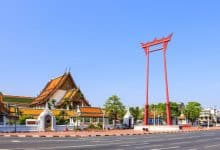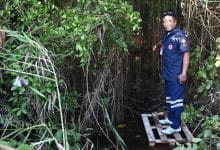Stink city: Residents hold noses as foul odour fills Bangkok streets

Residents in the capital city were left pinching their noses last night after an unpleasant smell permeated several districts of Bangkok. The Bangkok Metropolitan Administration (BMA) attributed the smell to a sudden weather shift and ensuing chemical reactions with airborne pollutants.
The BMA issued the statement in response to numerous reports from citizens who were disturbed by a pungent, burning scent and a veil of smog that descended upon the city yesterday evening.
Pornphrom Vikitsreth, an advisor to the city’s governor, Chadchart Sittipunt, revealed this information earlier today. He explained that the wind, which typically blows in from the Gulf of Thailand, had altered direction and was now originating from the east. Furthermore, a surge in smog concentrations was identified in neighbouring provinces within the past day.
Pornphrom also noted that the recent erratic weather patterns, marked by thunderstorms and elevated air pressure from the northeast of Thailand, contributed to an escalation in dust aggregation. This situation was further exacerbated by high humidity levels, which increased the concentration of PM2.5 pollutants that contain nitrogen and ammonia.
He suggested that the haze could have been triggered by gases such as nitrogen oxide and sulphur dioxide. These gases interact with sunlight and convert into dust, a phenomenon that has been causing issues for several months now. Sulphur dioxide is a byproduct of coal burning, metal-smelting facilities, and oil refineries, while nitrogen oxide is generated during combustion processes. This includes some nitrogen compounds in fuel and primarily a direct combination of atmospheric oxygen and nitrogen in flames.
Nitrogen oxide transforms into a more hazardous reddish-brown nitrogen dioxide gas upon contact with the ozone layer, leading to irritation of the eyes, nose, and throat, Pornphrom further elaborated.
The Geo-Informatics and Space Technology Development Agency (GISTDA) reported that as of midnight yesterday, PM2.5 fine dust levels had escalated to hazardous thresholds in 47 Bangkok districts.
The highest concentrations were recorded in Don Mueang, with 143.5 micrograms per cubic metre, followed by Laksi (143 µg/m³), Bang Sue (139 µg/m³), Chatuchak (128.1 µg/m³), and Phaya Thai (127 µg/m³). Elevated dust levels were also identified in several other provinces within the Central Region, reported Bangkok Post.
Latest Thailand News
Follow The Thaiger on Google News:


























